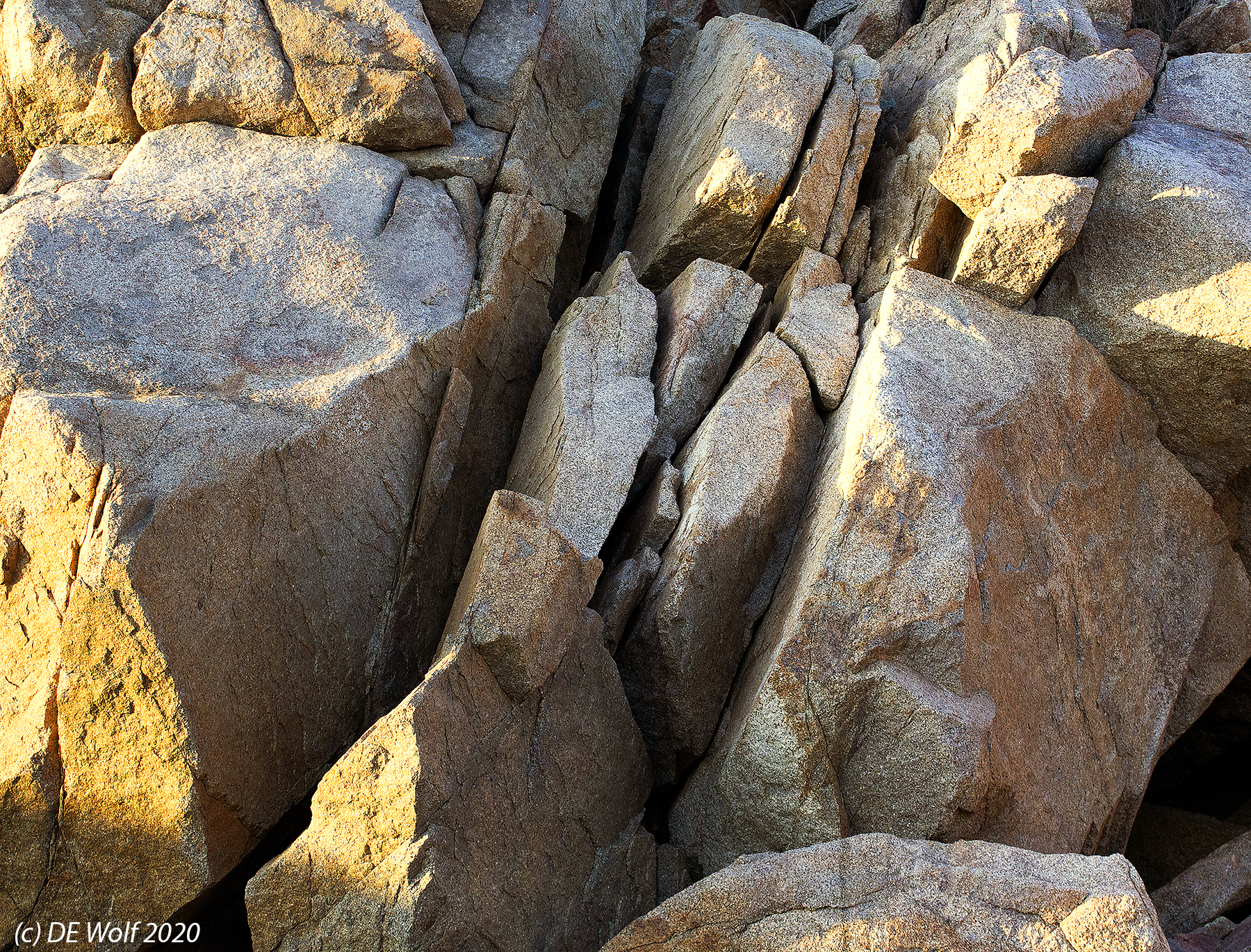At the risk of being redundant, I continue to revel in and work on my granite photographs of this past weekend. So today we revisit Avalonia! It seems a conflict in my mind whether to do these in black and white or in color. Today’s image, Figure 1, I decided to do exactly as I saw it, a warm late winter’s afternoon on the beach, bathed in a glorious golden light.
Granites come in so many different colors. The most beautiful that I’ve seen in their natural state are the red granites of Wisconsin. And no these are not called “Badgerites.” All of this, of course, depends upon the incorporated minerals.
An important aspect of granites is that they have had a long time too cool. Slow cooling, or annealing, promotes crystal nucleation and growth. Granites are plutonic rocks, meaning that they are extruded lava flows that form deep in the Earth; so they have a lot of time to cool. Deep within the Earth, you say? Yes far beneath the Earth in the realm of Pluto, god of the underworld. In contrast, lava flows on the surface of the Earth or even blasted into the air are volcanic rocks. They cool very quickly and are very fine grained.
For granite we have no less a person than Ansel Adams for a quote.
“No matter how sophisticated you may be, a large granite mountain cannot be denied – it speaks in silence to the very core of your being.”
Canon T2i with EF 70 to 200 f/4.0L USM lens at 87 mm, ISO 800, Aperture Priority AE Mode 1/320th sec at f/7.1 with no exposure compensation.

